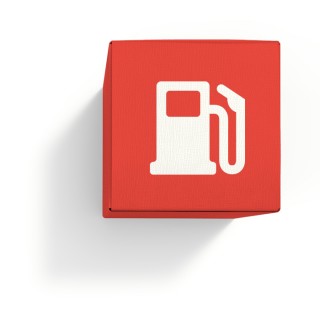News & insights
Date: May 2019 | Sector: Transport | Highways | Environment (transport) | Expertise: Public policy & strategy
Emission controls on trucks in Britain
Two developments set out the aims for emissions control, including decarbonisation, of freight transport in Britain over the next 30 years. First, in February 2019, the European Council came to a provisional agreement to limit the emissions of heavy trucks in Europe, in the form of some small amendments to the draft EU regulation published the previous year (see COM(2018) 284 final/2). This aimed to reduce the carbon emissions of heavy trucks by 30% by 2030, as well as other emissions.
Second, in April 2019, the UK National Infrastructure Commission (NIC) published a report Better Delivery: The Challenge for Freight on emission control of the UK freight sector, with a view in particular to substantially decarbonising the sector by 2050. The report acknowledged that the technology to achieve this in a practical and cost-effective manner for heavy road freight does not yet exist. But since decarbonising the sector more or less completely by 2050 is required to achieve our overall 2050 emissions objectives, the government should announce “plans by the end of 2021 to ban the sale of new diesel powered HGVs no later than 2040.” The NIC has also noted that substantial amounts of low-carbon electricity generating capacity and major electricity distribution reinforcement will be needed.
The freight industry reaction to the NIC’s recommendations has been mixed. The Road Haulage Association has been hostile to it. The Freight Transport Association is more positive, but says it will require substantial government support. There has been less reaction to the EU’s draft proposal. We now examine these two proposals to understand why. We see that complying with the EU’s draft regulation is not really so difficult, the true difficulty lies in going beyond the requirements there. The NIC’s recommendations for the longer term are logical, but, depending upon whether unknowable technological progress happens, could be costly and difficult for the freight industry to comply with.
The EU draft regulation
The basic idea of the draft EU regulation is that from 2025 the average unit CO2 output of new heavy trucks must be 15% lower than a 2019 baseline, and 30% lower by 2030. To create a point of enforcement, this will be assessed on the average output of each truck manufacturer, with fines for manufacturers who fail to meet the target. Measurement will include on-board monitoring of vehicles, to avoid the past difficulties of divergence between on-road performance and test performance. This is similar to rules that will apply to car manufactures, and similarly will allow some sharing/pooling across manufacturers.
The scheme also includes an incentive for the development and sale of zero and other lower emission vehicles. The incentive is that zero emission vehicles will have a weighting of 2 in the average, and lower emission vehicles will also have an enhanced weighting on a sliding scale. The aim would presumably be to facilitate still further radical emission reductions beyond 2030, which will be necessary if the EU is to meet its 2050 emissions targets.
Heavy trucks are here defined (simplifying somewhat) as those with a permitted load of at least 16 tonnes, or else those with at least 3 axles on a rigid truck or tractor. Thus we can understand that this is applying only to the heaviest types of road vehicles, those that are the most difficult to electrify at a reasonable cost. With a car or light van, it is possible to make large savings to the mass of the vehicle to accommodate the mass of batteries, given the present energy specific energy density of batteries, thus largely maintaining the payload (human or freight) of the vehicle. With a heavy freight vehicle, it is less feasible to make such mass savings, because of the need to provide for a heavy payload, and a vehicle structure with the strength to carry it. With present batteries, the mass of batteries will either take up an unacceptable proportion of the payload capacity, or else the range of the vehicle must be severely restricted to keep the mass of batteries low enough.
In its proposal, the Commission observes that less attention has been given to improving the energy efficiency of heavy trucks in Europe than some other places. Thus there is some ability to deliver part of the savings, indeed maybe close to all of the initially required 15% emission reduction, by improving the efficiency of diesel-powered trucks available in Europe.
The Natural and bio-Gas Vehicle Association of Europe has observed that use of gas to power trucks can deliver a carbon reduction of a little over 20% in long-haul trucks. If this can be combined with the potential efficiency saving noted above, then those together may go a long way towards the 30% saving required by 2030. But it would not then enable the further much greater cuts likely to be required beyond that. A question is whether it is worth investing much in a solution that may have value only for a relatively short period until much larger savings are required.
Nevertheless, they do state that the gas solution is most suited to long-haul trucks. Thus we may see a dichotomy arising between long-haul and short-haul trucks, with a battery-electric solution being more suited to short-haul trucks.
NIC’s report Better Delivery: The Challenge for Freight
CEPA delivered one of the four studies that the NIC report is based on, in association with Frazer-Nash Consultancy. CEPA/FNC’s study in particular focused on technologies for decarbonising road and rail freight, feasibility and time-lines. The NIC report looks beyond the EU 2030 requirements towards more completely decarbonising the sector by 2050. Efficiency savings and use of gas will be grossly inadequate to achieving that. Low carbon electricity will be crucial to it, whether in the form of battery power, or other systems that are based on it. Biogas and other low carbon biofuels might in principle have some value, but their supply is limited, and burning them in trucks is not necessarily the most cost-effective use of them.
It has become clear that the main option for decarbonising vehicles is battery-electric. This is already feasible and practical for light vans, and some larger vehicles too, especially if they only make shorter journeys. But it remains to be seen if they will develop sufficiently to become practical for use in long-haul trucks. If that does not happen, then it may be necessary to consider other solutions to reduce or offset their carbon emissions. These might include:
- Hydrogen produced by low-carbon method, or other low carbon fuel, made by electrolysis with low-carbon electricity: this is only about a third as energy efficient as battery-electric power, because of energy losses in electrolysis and combustion – this makes renewable hydrogen usage very costly;
- Electrification of major highways, with many trucks having a reserve power source for driving off electrified highways: if the reserve power source is battery, then this can be conveniently kept topped up while travelling on electrified roads; but expansion of electric rail freight may prove a much cheaper alternative to electrifying major roads;
- Carbon capture and storage: vehicle users consume fossil fuels and pay for the capture and long-term storage of the quantity of carbon they emit: progress in developing this has been slow due to cost; or
- Carbon capture and reuse: the quantity of carbon emitted by the vehicle is captured is converted into a fuel, such as synthetic diesel, using low-carbon electricity, and then used by vehicles: the energetic inefficiency is similar or worse than low-carbon hydrogen usage, which makes renewable synthetic diesel very costly.
We can see that low-carbon electricity will be an important input to all of these. Highway electrification and battery storage are the most energy efficient, thus minimising the quantity of new low-carbon electricity sources required to support such a freight economy. But the amounts of additional low-carbon electricity generation required are still large. If the entire present road freight sector (light and heavy) were made battery electric, if that were possible, its energy consumption would be about 80 TWh per year, equivalent to about a quarter of the UK’s present electricity consumption. This implies quantities of low-carbon electricity similar to the present low-carbon electricity output, just to service the requirements of road freight, before any consideration of future growth. The extensive use of less energy efficient methods, such as hydrogen, would require still larger amounts of low-carbon electricity to be supplied.
This large expansion in low-carbon electricity to decarbonise road freight is additional to the requirement to decarbonise the rest of the present electricity consumption, and also further expansion of it to provide for decarbonisation of other carbon-emitting sectors of the economy. Electricity is only about a quarter of the UK’s present energy consumption and other sectors require decarbonisation too, and low-carbon electricity is generally the basis for this. The substitution of these with low-carbon electricity typically gains large efficiencies. Nevertheless it is plausible that in decarbonising the economy we may need to roughly double our present electricity output as well as decarbonise it.
A further obstacle is the distribution of electricity to these new electricity-consuming applications. There is over-capacity in many parts of the present electricity distribution system. But electricity for use in trucks, whether for recharging batteries, or electrolysis to make hydrogen, is not broadly spread about, but concentrated in specific locations like freight depots and roadside fast charging stations. These will often require major new infrastructure to provide a supply, and this may be difficult some locations, such as in the interior of cities, where it is difficult or costly to lay high capacity lines.
Electricity storage will also be required on a large scale. One reason is to smooth the demand of electricity over the day or week at sites like freight depots, to reduce the size and cost of the distribution connection. The intermittency of renewable sources is also a large issue, but storage alone cannot solve it.
Conclusions
The EU’s 2030 heavy freight objectives can likely be achieved with little or no electrification of heavy freight vehicles – if electrification is required it can specialise in short distance transport where it is more practical. This likely explains the relatively muted response to the EU proposals. They are achievable without particularly great difficulty, certainly much less difficulty that what is required after that. The real difficulty lies in proceeding beyond 2030 targets to 2050 targets. This requires a depth of decarbonisation far beyond relatively easy efficiency changes and use of natural gas. It will require electrification of vehicles which is currently not practical, and thus depends upon technical progress which is unknowable. Even then the cost of it may turn out to be high.
Some freight transport interests have unsurprisingly objected to the recommendations of NIC report in strong terms. Others recognise its logic, but say the government will have to put its hand in its pocket to support them. There is no known route of achieving what the NIC has set out at current levels of cost. We require our main peer nations to do similar things if we are not to be put at potentially substantial economic disadvantage. But there is no denying that achieving Britain’s 2050 objectives requires large reductions in carbon output, and that this implies substantially decarbonising freight transport. There are other sources of emission that are still harder to remove.
Short of attempting to decarbonise the sector by carbon capture, which currently looks even more unlikely, NIC’s recommendation that diesel sales have to stop at least 10 years before the 2050 date is necessary but probably not even sufficient. NIC has not set out any specific requirements for what must replace diesel vehicles, and the reduction in carbon output of the replacement vehicles must be large.
To find out more, please contact our experts listed below.



